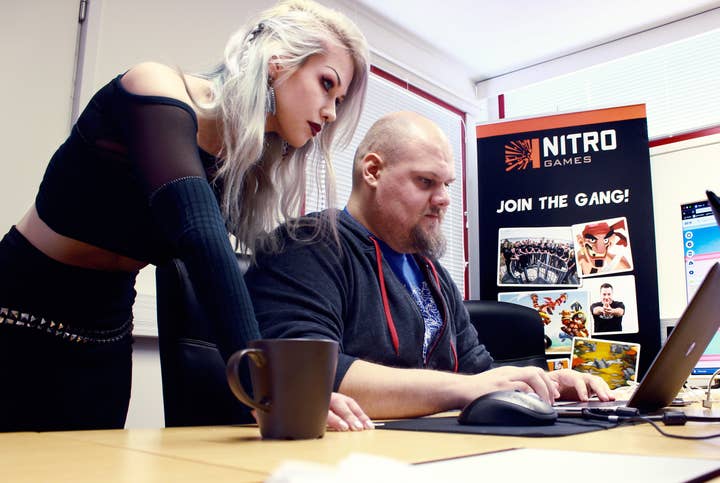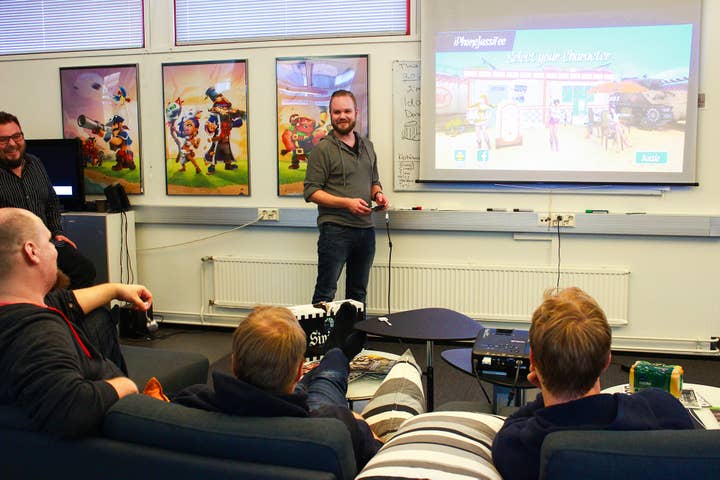Six games in six weeks: Why Nitro Games has dedicated itself to 'super fast failing'
The Finnish developer tells us why its team has just a fortnight to come up with a viable product before it is scrapped
Failure can be costly, particularly in an industry as competitive as video games. The increasing amount of time and resources poured into each title's development can turn out to be damaging if the final product doesn't prove to be as successful as its creator expected.
In the world of mobile and free-to-play games, consumer tastes change so fast and new games are released so frequently that developers simply cannot afford to spend months or years working on something that ultimately turns out to be a dud.
Finnish studio Nitro Games has come up with a solution: fail faster. Really fast. As in weeks, not months.
The firm has honed an accelerated methodology that means it is capable of developing the basic form of a new game, a Minimum Viable Product, in just one week. It then takes another week to see if the game has promise; those that do are developed further, those that aren't are scrapped. It's a strategy that CEO Jussi Tähtinen refers to as "super fast failing" and has become essential for "picking winning game ideas as early as possible".

"When developing games, most of your ideas end up not being that good," he tells GamesIndustry.biz. "We've developed a way of working that separates the good ideas from the rest as early in development as possible. In practice, we're talking about one week of super fast development and then publishing the game to a test market to get initial results. After this, we typically work with the same cycle moving forward: one week of development, one of publishing and collecting data, rinse and repeat. This means that we always get confirmation of each week's progress from the market.
"Why argue and debate over something that's in a design document or Powerpoint if you can actually put it on screen and test it out? Some might think that a result of such short development is not good for consumers, but the results were really that good. It's amazing how much data of the game's performance you can get with such a little investment in terms of time and money."

"Why argue and debate over something that's in a design document if you can actually put it on screen and test it out?"
Jussi Tähtinen, Nitro Games
Speaking at event held in London's Finnish Residence back in November, profiling some of the nation's most prolific developers, Tähtinen revealed that using this method Nitro Games was able to develop six games in quick succession. As the week-long development finished on one prototype, the team moved onto the next while the previous project gathered data and feedback. After all six games had completed a week of testing, Nitro was able to pick out the two most promising ones and begin scaling them up, with launches planned in the first half of this year.
But is cramming all that work into such a short development cycle, leaping from one project to the next within a matter of days, not dangerously close to crunch conditions?
"Actually it's quite the opposite," says Tähtinen. "It's quite an interesting effect that having too little time and too little team creates. It's forced us to focus to the right things. As we know that we only have one week, we ignore all secondary concerns and focus only on the most important things. As a result, it seems we get way better quality than what we're used to. It seems to be that for us the best way to achieve more is actually to do less."
The concept of super fast failing reminds us of another Finnish firm, one that has famously declared it's not afraid to kill its darlings after months of development if it believes the quality is not to a high enough standard. Clash of Clans creator Supercell has openly discussed the fact that it scraps projects the team is unsatisfied with - although obviously the revenues generated by the mobile strategy title and its Clash Royale spin-off help offset the costs of such failures. Nonetheless, it suggests Nitro Games' methods might not be as unique as they appear.
"Killing games is pretty normal. At least it should be, especially with free-to-play"
Jussi Tähtinen, Nitro Games
"Killing games is pretty normal," admits Tähtinen. "At least it should be, especially with free-to-play games."
"What's different here is that instead of spending, say six months and $1m to get the game to test markets, we're spending only a fraction of that. Our experience previously has been that if you develop the game until it's 'too ready' before you put it to test markets first time, it can be too challenging to see what exactly is causing the data to be what it is. With all these different analytics tools, dashboards and so on, we have so much data in our hands that it can very easily complicate things instead of giving clear answers. So by measuring things from first week we can make sure that we see clearly the effect of each weeks work in the data.
"We're also trying to hit an upcoming market trend, which means that there's a limited window of opportunity. And we're sure we're not alone trying to create the best synchronous multiplayer game. With our team and tech, we're able to compete with time-to-market. With our approach to super fast failing, we're increasing our chances of delivering the best possible game in that timeframe."

Nitro Games' process of super fast failing boils down to building four key pillars: the core gameplay, the metagame, a social layer that enables live events, and what Tähtinen refers to as "magic dust"
"Magic dust is something that you can't plan," he explains. "It either is there or isn't, but you know when you see it. With our experience, the metagame and social layer are something that's relatively mechanical to build - there's not much feeling associated. That leaves the core gameplay.
"Adding more content will almost always improve the numbers, but it will never fix the core game."
Jussi Tähtinen, Nitro Games
"This is the part that makes or breaks the fun in the game, so we figured that we start by focusing on that. So after one week of development, we have the core gameplay and potentially some really simple loops including scoreboards. If the results of the first week look like the game has initial traction, then we'll move on the second week."
The second week is just as important as the first. Nitro's team will spend this time polishing the core gameplay and building the metagame. The objective is to see if they can drive an uplift in retention by the end of the week.
"We want to make sure that by offering little bit more content in game, players are actually staying and playing the game several times," says Tähtinen. "If yes, we know we have something to build on. If not, we know there's something we need to fix.
"Experience has taught us that we should not try to fix issues with core game by adding more content to the game. Adding more content will almost always improve the numbers, but it will never fix the core and prevents the game from becoming a winner in the end. So we want total transparency to the core game and make sure that's in solid state before we build other layers on top of that."

"With all these different analytics tools, we have so much data that it can complicate things instead of giving clear answers."
Jussi Tähtinen, Nitro Games
Despite this streamlined method, Nitro has found that actually killing the games that aren't proving to be as popular is "always the hardest thing to do". In fact, Tähtinen says that focusing on one-week prototypes followed by a week of testing has actually created a new type of problem when it comes to resources.
"How should we balance the resources between game ideas that have traction, the ones that need problem solving, and developing new ideas to market in hopes of finding something even better?" Tähtinen says. "Our approach is we now split our staff into small teams on a weekly basis and let the data from market steer the balancing of which games we work on and which we don't.
"We'd like to think in a way that we never 'kill' the game, but that we put it on hold. Sometimes when you return to a game after a long time it's easier to see what was good about it and what was not and figure out a way to make a winner out of it. There's usually always something really good in each game that's worth re-iterating or then something that can be used in another game."
So what defines those winning ideas Nitro Games is so desperately searching for in its rapidly-produced prototypes? Tähtinen narrows it down to three things: retention, marketability and whether the team enjoys working on the game.
"Retention is the key metric you can't fool," he elaborates. "If retention is good, then everything else can be solved. For marketability, we do marketing campaigns for the games to acquire the users that will test them. This process gives us good indication on the marketing potential of the game and the IP. We need to know that we can find users with low enough CPIs, that the whole user acquisition funnel produces metrics that reflect the marketability of the game.
"The third key thing is really simple: are we having fun while making and playing the game? Games are not rocket science - you know when you have something you can't stop playing."
